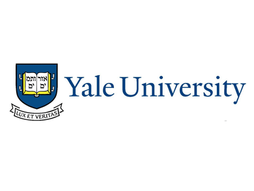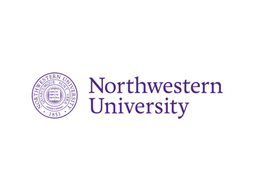Everything you need to know about University of Minnesota's Rooted in STEM Programs for High School Students
STEM programs for high school students, especially those with a focus on mentorship and hands-on experiences, can significantly enhance your profile when applying to college. These programs provide exposure to college-level coursework, networking opportunities with professionals, and tangible skills that admissions committees value. Participating in them signals a strong commitment to the field and readiness for advanced study, which can distinguish applicants in competitive environments.
In this blog, we’ll look at one such opportunity, the University of Minnesota’s Rooted in STEM program. Keep reading to learn more about the program’s structure, costs, eligibility, and pros and cons.
What is the Rooted in STEM Program?
The Rooted in STEM program at the University of Minnesota is designed to engage high school students from historically underrepresented groups in STEM fields. It is offered through the College of Science and Engineering (CSE) and serves students in grades 10-12. The program runs across multiple academic years, with participants attending one Saturday per month starting in their sophomore or junior year and continuing until December of their senior year. This program not only provides academic enrichment but also aims to build a supportive community among students from similar backgrounds. Participants work closely with undergraduate mentors and attend presentations by CSE faculty, graduate students, and industry professionals.
Is this program prestigious?
The Rooted in STEM program is considered prestigious due to its competitive admissions process and institutional backing. Although the acceptance rate is not publicly available, the program limits its cohort size to a small group, typically 25 students. To apply, students must submit a personal statement, high school transcripts, and a recommendation from a STEM teacher or counselor. This makes admission selective, with preference given to students from historically underrepresented backgrounds in STEM. The program is free, which indicates it is more prestigious than paid STEM opportunities. The chance to receive a substantial $40,000 scholarship further underscores its distinction in the STEM field.
What is the structure of the Rooted in STEM program?
The Rooted in STEM program is structured to span over two academic years, starting from a student's sophomore or junior year and continuing through their senior year. Participants are required to commit to attending one Saturday session each month, from 10 a.m. to 1 p.m., over the course of both the fall and spring semesters. Each semester includes four such sessions. In addition to these sessions, students have access to summer enrichment opportunities like camps, conferences, or research assistantships.
During the Saturday sessions, students engage in a variety of activities, including lab tours, hands-on STEM demonstrations, and Q&A sessions. The curriculum is designed to provide exposure to both academic and practical aspects of STEM fields, with a focus on community-building within STEM. Additionally, students are paired with undergraduate mentors from their communities who support them throughout the program.
How much does the program cost?
Participants can attend the program free of charge. Lunch is included on program days. Students are responsible for transportation to and from campus, but scholarships are available for students with financial need.
Who is eligible to apply?
To be eligible for Rooted in STEM, students must:
Be current 10th or 11th graders
Demonstrate an interest and aptitude in STEM
Be interested in attending a four-year, post-secondary institution
Preference is given to applicants from historically underrepresented backgrounds, such as BIPOC, first-generation college students, those from low-income households, immigrants or first-generation Americans, LGBTQIA+, and differently-abled.
How can I apply?
Applications open in the first week of November and close the first week of December. The process involves submitting a personal statement, self-reported academic details, and a recommendation from a STEM teacher or counselor.
Admission decisions are based on a holistic assessment of academics, personal background, and commitment to the program. It is recommended that you highlight factors such as a commitment to community service, significant family responsibilities, any obstacles you’ve overcome, and more. See the full list here.
Now that we know more about the program, let’s see what the pros and cons of attending are.
Pros
1. You will explore cutting-edge STEM fields and careers.
Rooted in STEM provides participants with exposure to current topics in STEM through faculty presentations, lab tours, and hands-on activities. You will interact with professionals from various STEM fields, including alumni and researchers from the University of Minnesota. This will allow you to gain a deeper understanding of potential STEM career paths, whether in academia, research, or industry. The program also connects students with student organizations and networks that can be useful in the future.
2. You will receive mentorship from undergraduate students.
Each participant is paired with an undergraduate mentor from the University of Minnesota, creating a direct support system. These mentors can help guide you through academic challenges and the college application process, offering advice and personal experiences. This peer-to-peer connection is particularly valuable for students from historically underrepresented backgrounds in STEM. Mentorship helps build confidence and reinforces students' belief in their ability to succeed in STEM.
3. You will have access to a $40,000 scholarship opportunity.
Students who complete the program through the fall of their senior year and are admitted to the University of Minnesota's College of Science and Engineering are eligible for a $40,000 scholarship funded by 3M. This scholarship provides $10,000 per year for four years, significantly reducing the financial burden of attending college. This opportunity can be a decisive factor for students looking to pursue STEM degrees without the concern of financial limitations. It also reflects the program's investment in students' long-term success.
4. You will participate at no cost.
The program is entirely free of charge, including materials and lunch during sessions. This makes Rooted in STEM highly accessible to students, particularly those from low-income backgrounds. Although transportation to the University of Minnesota campus is the student’s responsibility, financial aid for transportation is available to those who qualify. This allows participants to focus fully on the learning experience without worrying about financial barriers.
5. You will be part of a diverse and supportive STEM community.
Rooted in STEM is specifically designed to support students from historically underrepresented groups in STEM, such as BIPOC, LGBTQIA+, and first-generation college students. The program fosters an inclusive environment where students can relate to peers and mentors who share similar backgrounds and challenges. This creates a sense of belonging and support, which is crucial for students entering fields where they may often be in the minority. Diversity is also celebrated as a strength, with a focus on how varied perspectives enhance scientific progress.
Cons
1. You will need to commit to attending sessions for multiple years.
Rooted in STEM requires participants to commit from the middle of their sophomore or junior year through the fall of their senior year. This multi-year structure might not work for students with busy schedules or those who cannot commit to regular attendance. Missing sessions could potentially affect your eligibility for the $40,000 scholarship or full participation in other enrichment opportunities. The long-term commitment may also be a challenge for students balancing academic workloads and extracurricular activities.
2. You are responsible for arranging transportation to campus.
Although the program is free, students must manage their transportation to and from the University of Minnesota campus. For students living far from the university or without easy access to transportation, this could pose a logistical challenge. While transportation scholarships are available, the application process for this aid may add an additional hurdle. Additionally, students from rural areas or those outside the Twin Cities may find it more difficult to participate.
3. You may face competition for limited spots.
Rooted in STEM is selective, with the program typically capping participation at 25 students. This limited cohort size means that not all applicants will be accepted, especially given the program's focus on historically underrepresented groups in STEM. As a result, students with strong academic profiles may still face rejection due to the competitive nature of the admissions process. This exclusivity can be discouraging for students who meet the requirements but are not selected.
4. You need to balance the program with other academic responsibilities.
The commitment to attending monthly sessions, in addition to the potential summer enrichment opportunities, may interfere with your academic schedule or other extracurricular commitments. This could be especially challenging if you’re juggling AP classes, sports, or other demanding activities. Managing time effectively is crucial, as participation requires consistent involvement, which could place added pressure on students already balancing a heavy workload.
Our Thoughts
The University of Minnesota's Rooted in STEM is an excellent opportunity for high school students from underrepresented backgrounds to gain early exposure to STEM fields. The program's emphasis on community, mentorship, and academic enrichment provides a well-rounded experience for students preparing for college. The added financial benefit of the 3M scholarship makes it particularly attractive for students aiming for a future in STEM. However, the commitment and competitive admission process may pose challenges for some students. Overall, for those who meet the eligibility requirements and can commit to the program’s demands, it offers valuable support and preparation for a STEM career.
One other option—Lumiere Research Scholar Program
If you are interested in doing university-level research in STEM or other subjects which you can talk about in your college application, then you could also consider applying to the Lumiere Research Scholar Program, a selective online high school program for students founded with researchers at Harvard and Oxford. Last year, we had over 4,000 students apply for 500 spots in the program! You can find the application form here.
Lydia is currently a junior at Harvard University, studying Molecular and Cellular Biology and Economics. In high school, she was the captain of her high school’s Academic Decathlon team and attended the Governor's School of Engineering and Technology. She aims to become a life sciences consultant after graduation.









